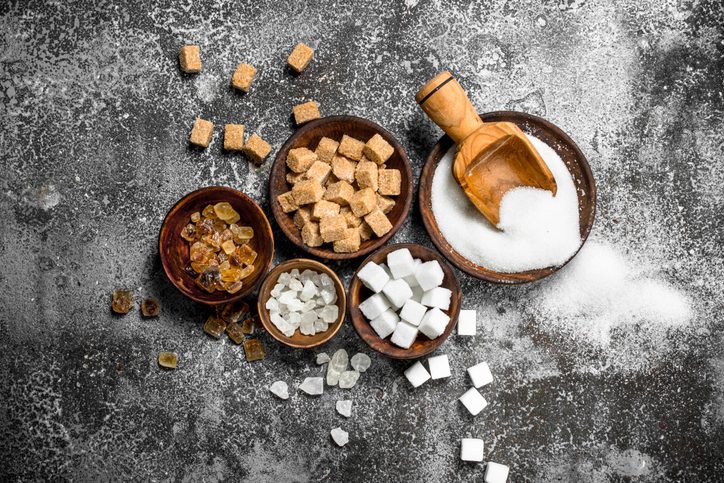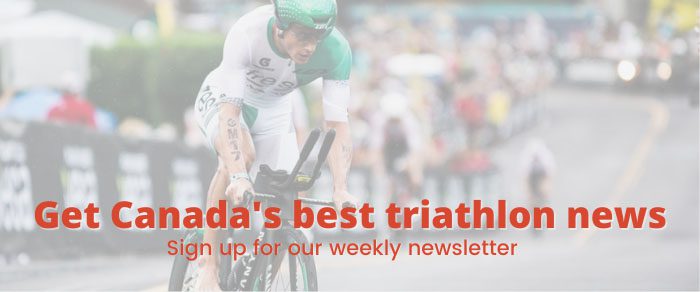Do triathletes need sugar?
A look at some sugar myths and misconceptions, as well as new technology that can measure your personal response to sugary foods.

Of all the questions athlestes ask me, “What about sugar…?” is at the top of the list. You likely have been bombarded with messages that sugar is evil, feeds cancer, causes obesity, ruins health and should be avoided at all costs. Yet, you likely have also heard that sugar fuels muscles during exercise, is the main ingredient in commercial sports foods and enhances recovery from hard workouts. Let’s look at some sugar myths and misconceptions, as well as new technology that can measure your personal response to sugary foods.
Is sugar addictive?
No. While sugar lights up pleasure centers in the brain, sugar is not an addictive drug like cocaine. Sugar cravings can often be curbed by preventing hunger. Hunger triggers cravings for sugary foods and the urge to overeat. Hungry runners and triathletes can easily devour a lot of gummy bears or Oreos in the blink of an eye.
If you believe you are addicted to sugar, do this experiment: rearrange your eating patterns to enjoy a king-sized high protein breakfast (3-egg cheese omelet + Greek yogurt + fruit + granola) followed by a satisfying protein-rich lunch (peanut butter & banana sandwich + glass of milk), and you will quickly notice your afternoon and evening sugar cravings dissipate (that is, unless you are eating to manage stress and smother feelings—as opposed to enjoying food for fuel).
Is sugar fattening?
No. Excess calories of any type are fattening. Many runners tell me that despite eating only “healthy” foods (i.e., no sugary sweets), they are not losing weight. They could simply be swapping 100 calories of gummy bears for 100 calories of grapes or 100 calories of nuts. No calorie deficit there.
Take note: the conversion of excess calories of sugar into body fat is actually a tough conversion (as compared to the conversion of excess calories of dietary fat into body fat). Sugar often comes with fat (cookies, ice cream, chocolate) Hence, overeating gummy bears could be less fattening than overeating fatty chips. (But first, curb the urge to overeat sugary-fatty foods by enjoying a king-sized breakfast!)
I’ve heard sugar feeds cancer cells. Should I avoid sugar to reduce my risk of getting cancer? No. Sugar feeds all cells, not just cancer cells. Giving sugar to cancer cells does not make them grow faster, nor does depriving them of sugar curb their growth. A diet rich in fruits, veggies and whole grains reduces the risk of cancer—even though these foods all end up as sugar in your blood. (Yes, all grains and plant-foods—“carbs”—digest into sugar.) Sugary foods can be linked to obesity, and obesity can be linked to cancer. Cancer patients who are prescribed prednisone as part of their treatment may need to limit sugar because the medication can elevate blood sugar, but that is a different story.
Does sugar cause diabetes?
No. Diabetes-Type 1 happens when the pancreas makes inadequate insulin to transport sugar out of the blood and into the muscles. Diabetes-Type II happens when the muscles do not respond normally to insulin. This often happens with people who are overfat and underfit. In comparison, most runners maintain normal blood glucose levels.
Should runners and triathletes be concerned about “sugar spikes”?
Generally, not. After you eat any type of carb (fruit, veggie, grain, sugary or starchy food), your blood sugar (blood glucose) will rise as the sugar moves from your gut into the blood stream. Blood glucose gets used by brain, muscle, liver and organs. This “spike” is a normal response, and the body has a complex system of checks and balances to keep it within a normal range (>70 and <180 mg/dL). After hard exercise, a spike in blood glucose is a normal physiological response.
Will monitoring my blood sugar level help me perform better?
Some runners and triathletes are measuring their sugar levels with a continuous glucose monitor (CGM). The device is sort of like a fuel gauge that can help them figure out if they are under-fueled. This knowledge might inspire endurance athletes who undereat to fuel better to perform better, but we need much more research to validate this hypothesis.
Most research with CGMs has been done on people with diabetes. They need to know if their blood glucose is too low (causing shakiness and hypoglycemic sweats) or too high (causing damage to tiny blood vessels in the eyes, kidneys and other organs—with long-term complications of organ failure and blindness, among other health issues). For them, CGMs can be health-saving, whereas for athletes, the data is more of a matter of curiosity.
How does a CGM work?
The athlete sticks on the back of the arm a small circular patch (a sensor) which has a very thin filament that painlessly goes under the skin and measures glucose between cells. The sensor connects to a cell phone app that handles the data. The technology can help validate if fatigue is related to low glucose and inadequate fuel.
While a CGM can help you learn about your body’s response to carbs, listening to your body’s messages—not looking at numbers on your cell phone—is the better way to go. Simply pay attention to how you feel: Are you droopy? Edgy? Unable to focus on the task at hand? If yes, you are likely low on fuel and your glucose is low.
I enjoy technology: heart rate monitors, sleep trackers, GPS watches. Where can I buy a CGM?
Search online or go to a drug store. SuperSapiens.com offers abundant info.
Before FOMO (Fear of Missing Out) nudges you to jump on the bandwagon, be sure this would be a smart choice for you. Some triathletes feel driven to obsessively monitor their glucose levels. They can easily feel stressed and become glucorexic. CGMs are best used for one to two weeks by athletes who have a specific performance problem they want to resolve, such as, why do I feel so tired 25 minutes into a 60-minute run? A CGM can identify a need to adjust food intake. Will this enhance your performance? Stay tuned for more research with runners!
Nancy Clark MS RD CSSD counsels both fitness exercisers and competitive athletes in the Boston-area (Newton; 617-795-1875). Her best-selling Sports Nutrition Guidebook is a popular resource, as is her online workshop. Visit NancyClarkRD.com for info.
